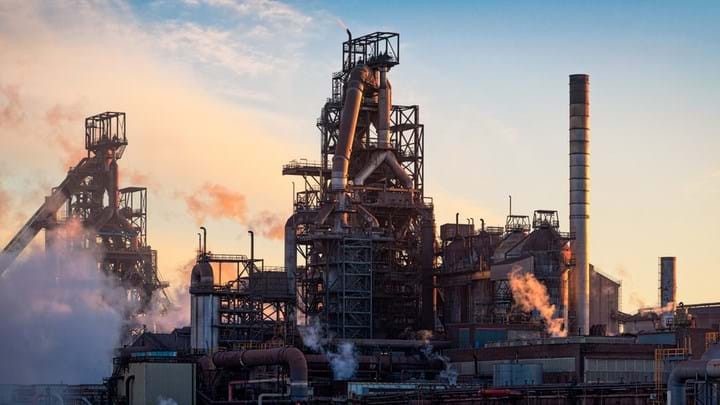£500m for Port Talbot electric arc furnace, with 2,500 jobs still set to go

THE UK government has agreed to give a £500m (US$651m) grant to Tata Steel to build an electric arc furnace at Port Talbot, though 2,500 jobs will still be lost as the firm presses ahead with plans to shut down the site’s only remaining blast furnace.
Tata Steel will invest £750m in the electric arc furnace, which can produce greener steel using renewable electricity to recycle scrap steel.
In January, the company announced plans to close both blast furnaces at the site. These burn coke to produce steel and in doing so emit huge volumes of emissions, making Port Talbot the largest source of CO2 in the UK. One blast furnace has already shut down and the second is expected to close by the end of September.
Decarbonisation and deindustrialisation
Concerns are now mounting that British Steel will imminently follow suit and close its blast furnace in Scunthorpe. This would spell the end of virgin steel production from iron ore in the UK. Officials have warned that if these operations are not protected it puts national security at risk and the ability to construct major domestic infrastructure.
Alasdair McDiarmid, assistant general secretary of the Community workers union, said: “Decarbonisation should never mean deindustrialisation, and we will need our steel industry to thrive if we are to create a greener, fairer economy.”
The steel industry has warned government must do more to level the playing field with overseas steel manufacturers, noting that UK producers are paying up to 50% more for electricity than competitors in France and Germany.
Gareth Stace, director general of the trade group UK Steel, said: “Steel businesses need competitive electricity prices, access to good quality steel scrap, and fair competition from international trade.”
Investment plans at Port Talbot
Basic engineering for Port Talbot’s £1.25bn electric arc furnace project has been completed, Tata Steel said, and it expects to apply for planning approvals by November and for large-scale work to begin in July 2025.
Orders will soon be placed for the electric arc furnace and ladle metallurgy furnaces, a new coil box and crop shear for the hot strip mill, a cranes package, and for construction management and civil engineering.
TV Narendran, CEO of Tata Steel, said he looked forward to the speedy execution of the project and that the “complex and ambitious transformation of Port Talbot has the potential to make the plant one of Europe’s premier centres for green steelmaking.”
Redundancy packages
The electric arc furnace is expected to be operational within three years but will support far fewer jobs – just 500 during construction compared to the thousands that will be lost across the closure of both the site’s blast furnaces.
Under the terms of the government’s grant, Tata Steel will need to retain 5,000 employees across UK operations. It currently employs around 8,000, with half at Port Talbot.
The government says full-time workers who take voluntary redundancy will receive a minimum of £15,000, a £5,000 “retention” payment, and an offer of paid-for training to gain new skills. Meanwhile, up to 400 staff who faced compulsory redundancy will be offered training, full pay for a month and then £27,000 in pay across the following 11 months.
Business secretary Jonathan Reynolds said that while the terms are an improvement on what was being negotiated by the previous government, he acknowledged the deal “falls short of what would be my ideal”.
Paul Morozzo, senior campaigner at Greenpeace UK, said more needs to be done to support cleaner industries. “We urge the government to heed the warnings of the past and invest fully in industries of the future. Proper investment in UK green steel production would help our renewable energy supply chain whilst supporting workers and communities in places like Port Talbot and Scunthorpe, rather than having to rely on polluting imported steel to build wind turbines.”
The government has committed to invest a further £2.5bn to rebuild and decarbonise the steel industry and to publish a steel strategy early next year.
Recent Editions
Catch up on the latest news, views and jobs from The Chemical Engineer. Below are the four latest issues. View a wider selection of the archive from within the Magazine section of this site.




